In the ever-evolving landscape of kitchen appliances, the rise of the automated air fryer assembly line marks a significant milestone. It’s not just about the speed and efficiency of mass production; it’s about how technology is reshaping our lives, one fry at a time. Let’s dive into the world of automated air fryers and explore how they’re changing the game for manufacturers and consumers alike.
A Glimpse into the Modern Assembly Line
In the heart of modern manufacturing, the assembly line stands as a testament to human ingenuity and the relentless pursuit of efficiency. It’s a marvel of coordination and precision, where raw materials are transformed into products that enhance our daily lives. A glimpse into the modern assembly line reveals a symphony of activity, a dance of parts and people that’s both mesmerizing and complex.
Imagine walking through a factory floor where the hum of machinery is a constant companion. The air is filled with the clinking of metal and the soft whir of automated systems. The line stretches out before you, a long, winding river of motion and purpose. Workers move with practiced ease, their movements synchronized to the rhythm of the assembly.
At the start of the line, the raw materials are meticulously prepared. Sheets of metal, plastic, and various components are laid out in organized rows, each waiting to become part of a functional product. Robots and conveyors take over from there, ensuring that every piece is positioned just right for the next step in the process.
The line is divided into zones, each dedicated to a specific task. Workers might be responsible for applying adhesives, inserting components, or checking for defects. The speed at which they work is remarkable; their hands move with a grace and efficiency that seems almost supernatural. It’s as if they’ve been in this role for lifetimes, each movement a well-rehearsed part of their daily choreography.
The conveyors are the lifelines of the assembly line, carrying parts from one station to the next. They glide silently, their belts moving with the precision of a metronome. As components pass through the various zones, they’re joined, soldered, and polished, taking shape with each step. Sensors and automated tools ensure that the parts are aligned correctly, often with tolerances measured in micrometers.
In one section, the line slows down. Workers with magnifying glasses inspect the components, searching for any irregularities that might escape the machines’ keen eyes. Their focus is intense, their dedication unwavering. They’re not just assembling products; they’re crafting them, ensuring that each one meets the highest standards of quality.
The assembly line is a marvel of interconnectivity. Each station is a node in a vast network, where information and parts flow seamlessly. Computerized systems monitor the entire process, from raw material arrival to finished product dispatch. Data is collected and analyzed in real-time, allowing for adjustments and improvements to be made on the fly.
As the line progresses, the product takes on its final form. It’s as if it’s being born, emerging from the assembly line with each layer of completion. Paint is applied, labels are affixed, and protective packaging is sealed around the product. The final touches are added, and it’s ready to be shipped to its new home.
In the modern assembly line, there’s a sense of wonder and awe. It’s a blend of technology and craftsmanship, where the human touch meets the power of automation. The line is not just a machine; it’s a living, breathing entity, a testament to the power of teamwork and the pursuit of perfection.
Throughout the process, the line is never static. It evolves, adapts, and grows with the changing needs of the market. New technologies are integrated, old methods are refined, and the line itself becomes more efficient, more responsive, and more innovative.
In the end, the modern assembly line is more than just a place of work; it’s a place of creation. It’s where ideas are turned into reality, where potential is transformed into tangible products that improve our lives. A glimpse into this vibrant, dynamic world reveals not just the products of human industry, but the spirit of innovation that drives us forward.
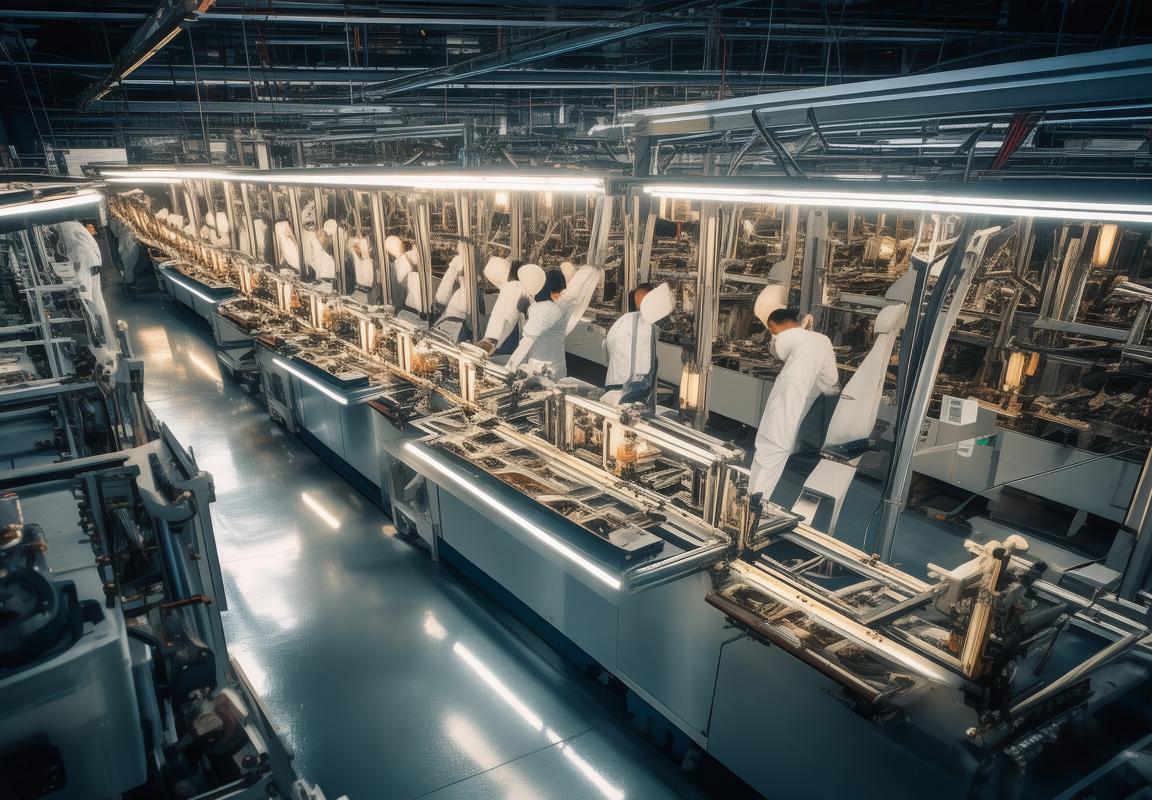
The Air Fryer Revolution
In the bustling heart of the kitchen appliance industry, a revolution is brewing, and it’s all about air fryers. These once obscure cooking gadgets have transformed into must-have kitchen accessories, captivating consumers with their ability to offer healthier, faster, and more convenient cooking experiences. Let’s dive into the air fryer revolution and explore what makes these appliances so popular.
Air fryers, once a niche product favored by food enthusiasts and chefs, have now become a staple in homes across the globe. Their compact design and promise of healthier fried food options have resonated with health-conscious consumers looking for ways to indulge without the guilt. The technology behind these appliances is simple yet ingeniously effective, using hot air to circulate around food, resulting in crispy, golden-brown exteriors and tender interiors without the need for excessive oil.
The appeal of air fryers extends beyond health benefits. These devices are versatile, capable of cooking a wide array of dishes, from crispy French fries and golden-brown chicken to even baking cakes and cookies. Their ability to mimic the taste and texture of fried foods without the oil has turned them into a versatile cooking tool that can easily replace traditional frying pans in many recipes.
One of the key factors driving the air fryer revolution is the convenience they offer. With the busy lifestyles we lead today, who has the time to wait for deep-frying to render out the oil? Air fryers are quick, often taking less than half the time of traditional frying methods. This efficiency is a game-changer for those who want to enjoy their favorite fried foods without the wait.
The sleek designs and compact sizes of air fryers have also made them a stylish addition to any kitchen. They come in a variety of colors and finishes, fitting seamlessly into modern and traditional kitchen decors. From minimalist white to bold red, there’s an air fryer out there to match every aesthetic preference.
Moreover, the air fryer revolution has sparked a surge in innovation. Manufacturers are continuously pushing the boundaries, introducing new features that make air fryers even more user-friendly. Smart air fryers with built-in timers, temperature controls, and pre-programmed settings are becoming increasingly common, allowing even the most inexperienced cooks to achieve professional-quality results at home.
As the air fryer market has grown, so too has the range of accessories and add-ons. From air fryer baskets to dehydrator attachments, these additional tools expand the capabilities of the air fryer, turning it into a multipurpose appliance that can perform tasks ranging from roasting to grilling to even sous-vide cooking.
The air fryer revolution has also had a significant impact on the food industry. Fast-food chains and restaurants have started offering air-fried options, recognizing the demand for healthier alternatives. Chefs are experimenting with new recipes that showcase the unique qualities of air-fried foods, and food bloggers are celebrating the creativity that air fryers bring to the kitchen.
In the world of cooking, the air fryer has become a symbol of change. It represents the intersection of technology, convenience, and health, offering a solution that appeals to a wide audience. The air fryer revolution is not just about changing how we cook; it’s about changing our perception of what cooking can be.
The rise of air fryers has also sparked a cultural shift in how we approach food. It’s no longer about indulgence at the expense of health; it’s about enjoying delicious food in moderation, with the peace of mind that comes from knowing it’s been prepared with minimal oil. This shift is a testament to the power of innovation in shaping our daily lives and our relationship with food.
As we continue to embrace the air fryer revolution, we’re reminded that sometimes the simplest changes can have the most profound effects. From the heart of the kitchen to the tables of the world, air fryers are rewriting the rules of cooking, one crispy, golden fry at a time.

Introducing the Automated Air Fryer Assembly Line
In the heart of the manufacturing world, there’s a buzz of activity that’s not just about the creation of products, but about the evolution of processes. Enter the automated air fryer assembly line, a marvel of modern engineering that’s not just redefining the way kitchen appliances are made, but also setting new standards for efficiency and quality.
The assembly line stretches out, a long, winding path where precision meets power. At its core, it’s a symphony of robotics and technology, each step meticulously designed to ensure that the end product is not just a functional air fryer, but a testament to what modern manufacturing can achieve.
At the very beginning, raw materials—plastic sheets, metal components, and electronic circuits—are carefully loaded onto conveyors. These conveyors are the lifelines of the line, moving parts at a steady pace that’s both deliberate and dynamic. The first stop is a station where robots with precision-like hands begin the delicate task of cutting and shaping the materials into the basic components of an air fryer.
Next, the components are guided through a series of automated welding stations. Here, the once-separate parts are fused together, creating the structural integrity that will hold the air fryer together. The robots work with a precision that’s almost surgical, ensuring that every seam is as strong and clean as the last.
As the frame takes shape, the line shifts gears. now, it’s all about the internal workings. Electronic components are meticulously placed and connected, guided by an intricate system of sensors and robotic arms that can navigate complex paths with ease. These components are not just any parts; they are the heart of the air fryer, the engines that will power its ability to cook food with minimal oil.
Once the internal structure is in place, the air fryer moves on to the finishing touches. The exterior is painted, a process that involves a series of automated spray booths where the latest in environmental-friendly paints are applied with great care. The colors are vibrant, the finish is smooth, and the air fryer starts to take on the look of a product that’s ready for the shelves.
The line then moves to the quality control phase. Here, the air fryers are subjected to a battery of tests. Robots equipped with sensors check for any defects, from a misaligned part to a scratch on the paint. If a flaw is detected, the air fryer is immediately sent back for correction, ensuring that only the highest quality products continue on the line.
Next comes the packaging stage. The air fryers are placed into their boxes, which are then sealed and labeled. This is another area where automation excels, with machines that can handle the packaging process with speed and accuracy. The boxes are stacked neatly, ready to be transported to distribution centers.
As the last air fryer rolls off the line, it’s clear that the automated assembly process is not just about speed. It’s about consistency, reliability, and the ability to produce a product that is not just efficient but also safe. Each air fryer that leaves the line is a testament to the power of modern manufacturing, a symbol of what can be achieved when technology and human ingenuity come together.
The automated air fryer assembly line is more than just a production process; it’s a reflection of the future of manufacturing. It’s a place where innovation is not just an idea, but a reality, where the products that we use in our daily lives are crafted with a level of precision and care that was once unimaginable. It’s a glimpse into a world where the boundaries of what’s possible are constantly being pushed, and where the end result is not just a product, but a story of human achievement.
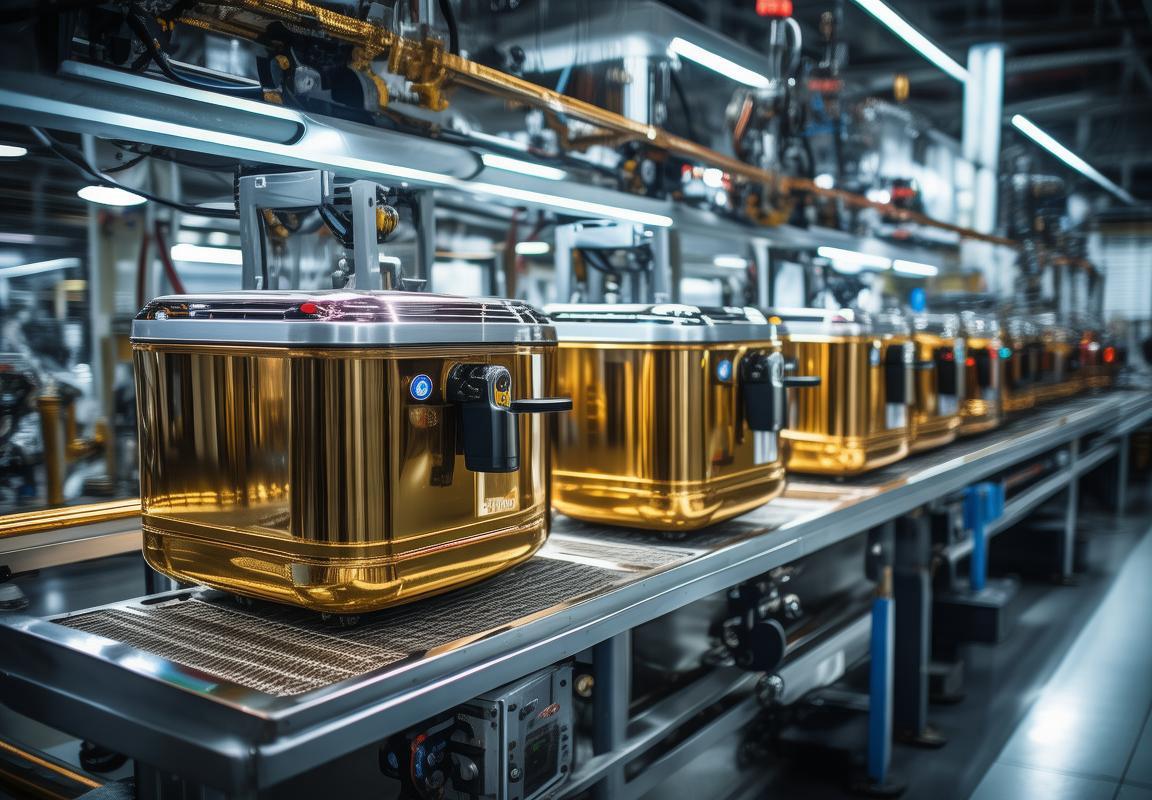
The Benefits of Automation
In the realm of kitchen appliances, the advent of the automated air fryer assembly line has sparked a transformation that’s hard to overlook. This innovative process offers a multitude of benefits that not only enhance the efficiency of manufacturing but also positively impact the end product and the consumer experience. Let’s delve into some of the key advantages of this cutting-edge technology.
The precision of automated systems ensures that each air fryer is crafted to the highest standards, reducing the margin for error that comes with manual assembly. This level of consistency is unattainable by human hands alone, and it directly translates to a product that performs as advertised, time after time.
- Consistency in Quality
- Every air fryer produced on the automated line undergoes the same meticulous process, ensuring that the final product is uniform in its build and functionality.
- This reliability is crucial for consumer trust, as it guarantees that each unit will deliver the same high-quality performance.
- Reduced Production Time
- Automation allows for a streamlined process that can produce air fryers at a much faster rate than traditional methods.
- The elimination of manual labor and the integration of robotic systems significantly cut down on the time it takes to assemble each unit.
- Enhanced Efficiency
- The efficiency of the automated assembly line is undeniable. Robots and machines work tirelessly, without the need for breaks or the potential for fatigue.
- This means that production can continue around the clock, maximizing output without compromising on quality.
- Cost Savings
- While the initial investment in an automated assembly line can be substantial, the long-term cost savings are substantial.
- By reducing the need for a large workforce and minimizing waste, companies can lower their operational costs significantly.
- Safety and Health Benefits
- Automation reduces the risk of workplace accidents, which are more common in manual assembly environments.
- Workers are less exposed to hazardous materials and environments, leading to a healthier workforce and a safer workplace.
- Scalability
- The automated assembly line can be easily scaled up or down to meet fluctuating demand.
- This flexibility allows manufacturers to adapt quickly to market changes without the need for major infrastructure overhauls.
- Environmental Impact
- The efficiency of automated assembly lines can lead to a reduction in energy consumption and waste production.
- By optimizing the use of resources, manufacturers contribute to a more sustainable approach to production.
- Innovation and Customization
- Automation opens the door to new innovations and customization options, as the systems can be reprogrammed to produce a wide range of products.
- This agility allows manufacturers to keep up with evolving consumer preferences and market trends.
- Quality Control
- Automated systems can be programmed to perform detailed inspections at every stage of the assembly process.
- This ensures that any defects or issues are caught early, preventing defective products from reaching the market.
- Training and Adaptation
- With automation, there is a need for specialized training for the workforce, which can lead to a more skilled and adaptable labor force.
- Employees can focus on tasks that require creativity and problem-solving, while the robots handle the repetitive, precise work.
In summary, the benefits of automation in the air fryer assembly line are multifaceted, offering a blend of efficiency, quality, and sustainability that is reshaping the landscape of kitchen appliance manufacturing. As technology continues to advance, these advantages are likely to expand, further solidifying the role of automation in the future of production.
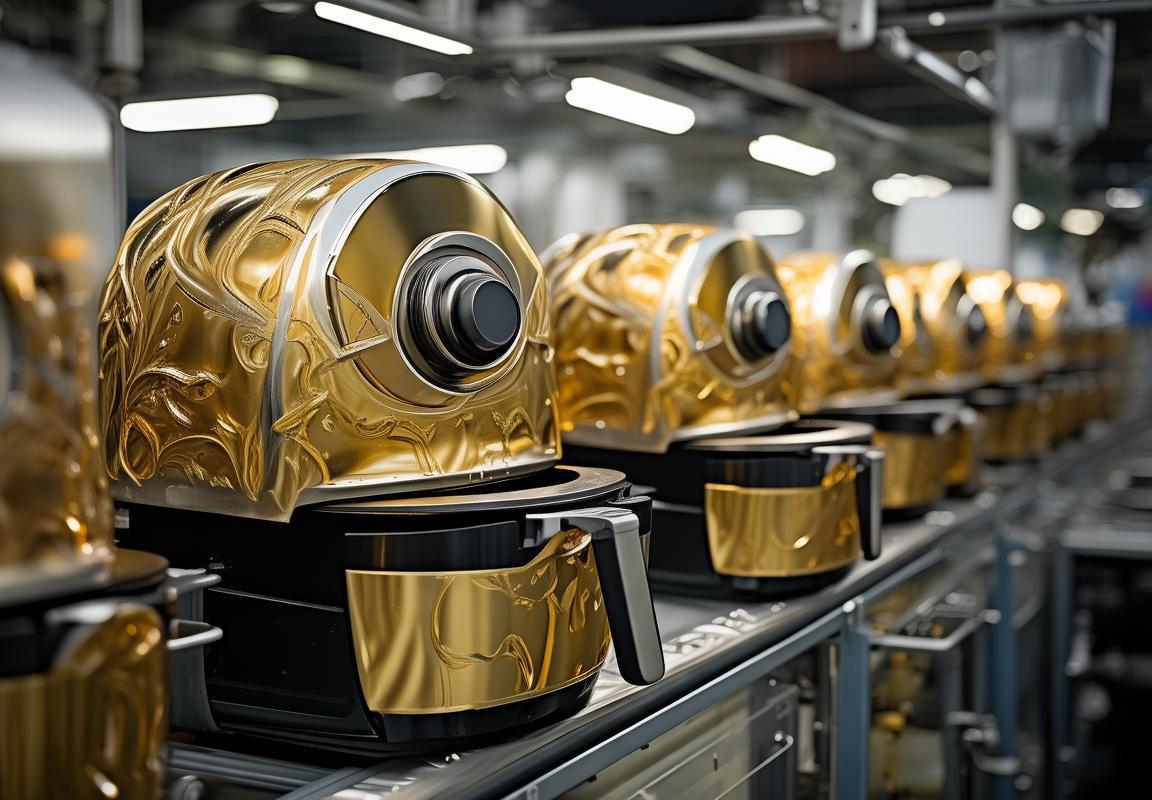
The Impact on the Market
The transformation brought about by the automated air fryer assembly line has been nothing short of revolutionary. This technological marvel has not only reshaped the landscape of kitchen appliance manufacturing but has also had a profound impact on the market as a whole. Let’s delve into the various ways in which this shift has left its mark.
The streamlined production process of the automated assembly line has led to a significant reduction in the cost of manufacturing air fryers. With fewer manual labor hours required and the elimination of human error, manufacturers can produce these appliances at a much lower cost. This cost efficiency has trickled down to the consumer, resulting in more affordable air fryers that are accessible to a broader market segment.
As the price of air fryers dropped, consumer demand soared. The convenience and health benefits offered by air fryers have made them a must-have item for many households. The market has seen a surge in sales, with air fryers becoming a staple in kitchen appliance stores and online marketplaces. This increased demand has also sparked a competitive landscape, with various brands vying for market share.
The rise of the automated assembly line has also brought about a wave of innovation in the air fryer market. Manufacturers are now able to experiment with new features and designs, pushing the boundaries of what an air fryer can do. From smart features that allow for remote monitoring to models that can handle a wider variety of cooking tasks, the market is witnessing a rapid evolution of product offerings.
The impact of the automated assembly line extends beyond just the product itself. It has also influenced the way products are distributed and sold. With the increased efficiency of production, manufacturers can produce more units in a shorter time frame, allowing for faster replenishment of stock. This has led to a more consistent supply chain, ensuring that retailers can always have fresh inventory on hand.
The market has also seen an increase in customization options for air fryers. Thanks to the precision and flexibility of automated assembly lines, manufacturers can easily modify the production process to create custom models or limited edition products. This has opened up new revenue streams and has allowed brands to cater to niche markets that were previously underserved.
The automated assembly line has also played a crucial role in the global market. With the ability to produce air fryers at a lower cost, manufacturers can now export these appliances to countries around the world. This has not only expanded the reach of air fryer brands but has also had a positive impact on the global economy by creating new job opportunities and fostering international trade.
The environmental impact of the automated assembly line is another area where the market has seen significant benefits. By reducing waste and energy consumption, these lines contribute to a more sustainable approach to manufacturing. This has resonated with environmentally conscious consumers, who are increasingly seeking out products that align with their values.
Lastly, the market has seen an improvement in the quality of air fryers. The precision of automated machinery ensures that each unit is assembled with the utmost care, leading to fewer defects and a higher overall quality standard. This has enhanced consumer trust in the product, making it more likely for them to make repeat purchases and recommend the appliance to others.
In conclusion, the automated air fryer assembly line has had a multifaceted impact on the market. From driving down costs and increasing accessibility to fostering innovation and sustainability, this technological advancement has reshaped the landscape of the air fryer industry, offering consumers more options and manufacturers new opportunities for growth.
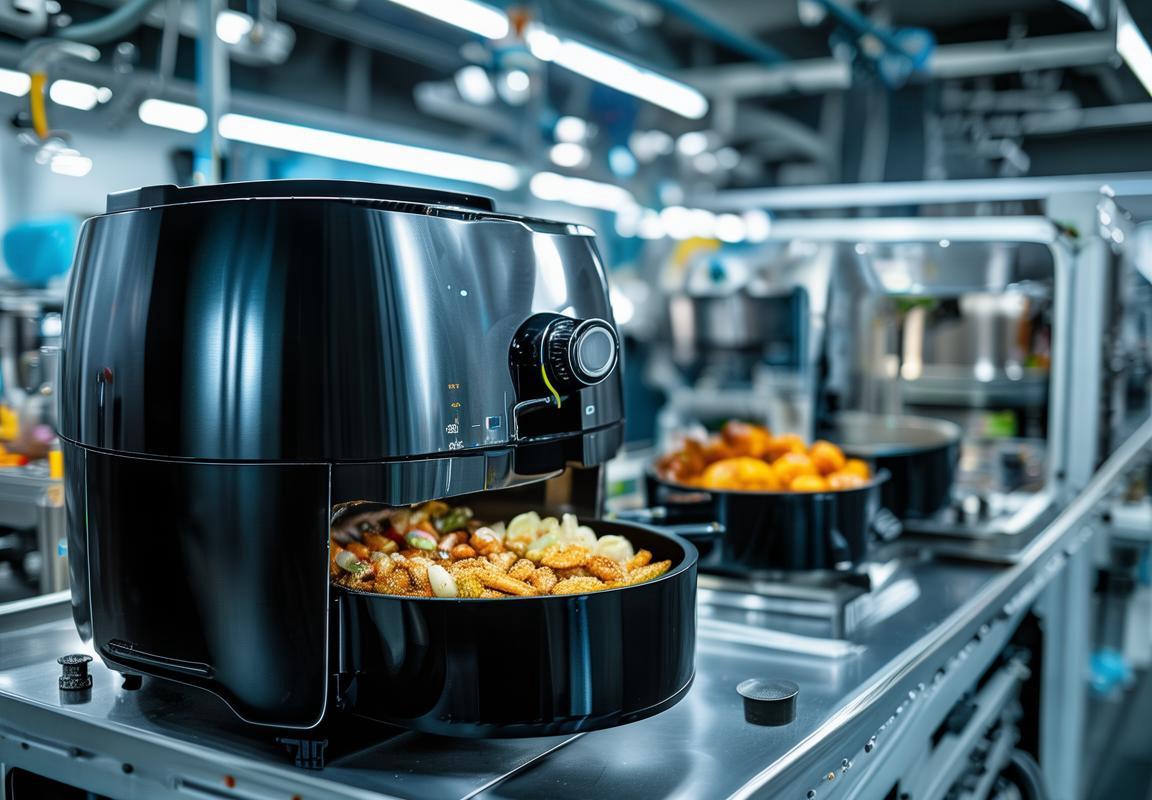
Innovation in Action
In the realm of kitchen appliances, the automated air fryer assembly line has become a beacon of innovation, transforming the way we think about manufacturing and consumer experiences. This section delves into the tangible impacts of this technological marvel on the market, showcasing how it’s reshaping the landscape.
The assembly line’s precision and speed have significantly reduced lead times, allowing manufacturers to respond swiftly to market demands. Orders that once took weeks to fulfill can now be processed in mere days, ensuring that consumers get their hands on the latest gadgets almost as soon as they’re introduced.
Customers are reaping the benefits of this efficiency. With shorter wait times, the demand for air fryers has surged, as more people are eager to try these healthier alternatives to traditional frying methods. This surge in demand has also led to increased competition, as new players enter the market, eager to capitalize on the trend.
The introduction of the automated assembly line has spurred a wave of innovation within the industry. Companies are not only focusing on improving the assembly process but also on enhancing the functionality and design of the air fryers themselves. We’re seeing a surge in features like smart technology, which allows users to control their appliances remotely, and eco-friendly materials, which are more sustainable and durable.
The line’s automation has also had a ripple effect on the supply chain. Suppliers are being pushed to innovate as well, with a focus on providing parts that are easier to automate and integrate into the production process. This has led to the development of specialized components that are more reliable and efficient, ultimately improving the quality of the final product.
Manufacturers are not just streamlining production; they’re also optimizing it for cost-effectiveness. By reducing waste and improving yields, the automated assembly line allows for a more sustainable business model. This cost savings is often passed on to the consumer, making air fryers more accessible to a broader market.
The impact of the automated assembly line is not limited to the product itself. It has also influenced the way consumers perceive and interact with kitchen appliances. There’s a growing expectation for technology integration, and the air fryer assembly line has set a precedent for what’s possible. Consumers are now more open to smart appliances that offer convenience and efficiency, driving further innovation in the industry.
In the realm of sustainability, the automated assembly line is a game-changer. By reducing the need for manual labor, it slashes energy consumption and carbon emissions. This has become a major selling point for manufacturers, as consumers increasingly prioritize eco-friendly practices in their purchasing decisions.
The assembly line has also opened up new opportunities for customization. While mass-produced air fryers may not cater to every individual’s needs, the efficiency of the line allows for easier modifications and special orders. This means that niche markets can be addressed more effectively, leading to a diverse range of products that cater to different tastes and preferences.
The innovation in action is clear: the automated air fryer assembly line has not only revolutionized the production process but has also had a profound impact on the market. It’s a testament to the power of technology to drive change and improve the way we live, cook, and interact with our appliances. As the line continues to evolve, we can expect even more exciting developments that will further shape the future of kitchen appliances.
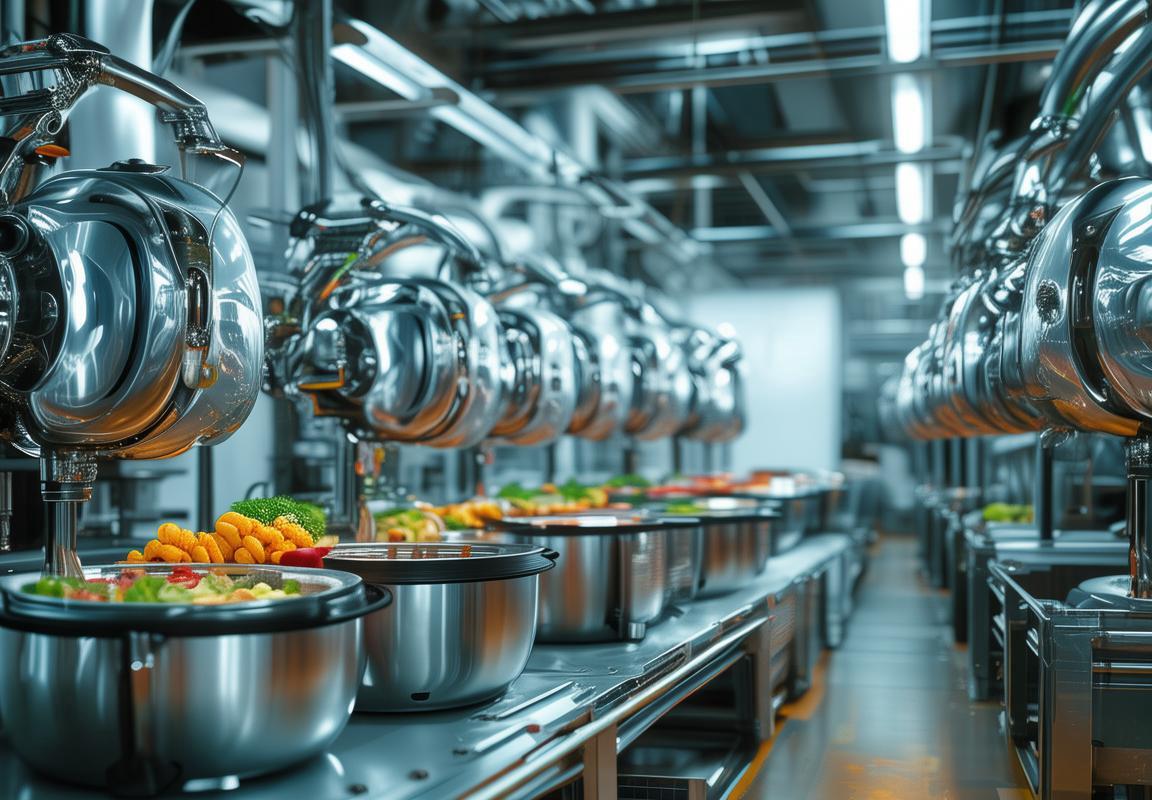
Environmental Considerations
In the quest for efficiency and sustainability, the environmental considerations surrounding the automated air fryer assembly line are paramount. Here’s a closer look at how these factors intertwine with the manufacturing process:
The assembly line’s design prioritizes energy-efficient machinery. By using state-of-the-art equipment, manufacturers reduce the energy consumption that would otherwise be required for traditional, less efficient methods. This not only cuts down on operational costs but also slashes the carbon footprint of the manufacturing process.
Waste reduction is a cornerstone of the automated assembly line. The precision and speed of automated systems minimize errors and scrap, which would otherwise end up in landfills. Materials are carefully managed, and recycling programs are in place to handle waste products, ensuring that the line operates with minimal environmental impact.
Water usage is also a critical concern. The automated assembly line employs water-saving techniques, such as recycling water for cleaning purposes and optimizing the use of water in cooling systems. This approach minimizes the strain on local water resources and contributes to a more sustainable manufacturing practice.
Sustainable materials are at the heart of the automated air fryer assembly line. Biodegradable plastics and recycled metals are used wherever possible, reducing the demand for new resources and the environmental impact of raw material extraction. The use of eco-friendly materials not only benefits the planet but also appeals to environmentally conscious consumers.
The assembly line’s logistics are meticulously planned to minimize transportation-related emissions. By consolidating shipments and optimizing routes, manufacturers reduce the carbon footprint associated with delivering parts and finished products. Additionally, the line’s proximity to suppliers and customers can further cut down on transportation-related environmental impact.
The automated assembly line is designed with the end of its life in mind. Modular components make it easier to repair and upgrade, extending the lifespan of the equipment. When the time comes for decommissioning, the line’s components can be disassembled and recycled, ensuring that materials are not wasted and that the environmental impact is minimized.
Energy management systems are integrated into the assembly line to monitor and control energy use in real-time. These systems adjust the line’s operations to match the current demand, preventing unnecessary energy consumption. The use of smart technology ensures that the line operates efficiently, reducing its environmental impact.
Innovation in the assembly line doesn’t stop at energy and waste management. The integration of renewable energy sources, such as solar panels or wind turbines, further reduces the reliance on fossil fuels. These renewable energy systems are designed to provide a significant portion of the line’s power, contributing to a greener manufacturing process.
Employee training and awareness programs are also integral to the environmental considerations of the assembly line. By educating workers on sustainable practices and the importance of environmental stewardship, manufacturers foster a culture of responsibility. Employees are encouraged to identify ways to improve the line’s environmental performance, from small changes in daily operations to larger-scale initiatives.
The automated air fryer assembly line’s environmental considerations are not just a trend; they are a testament to the industry’s commitment to sustainability. As consumers become more environmentally conscious, the market for eco-friendly products is growing. The assembly line’s dedication to reducing its environmental impact not only benefits the planet but also positions the company as a leader in sustainable manufacturing practices.
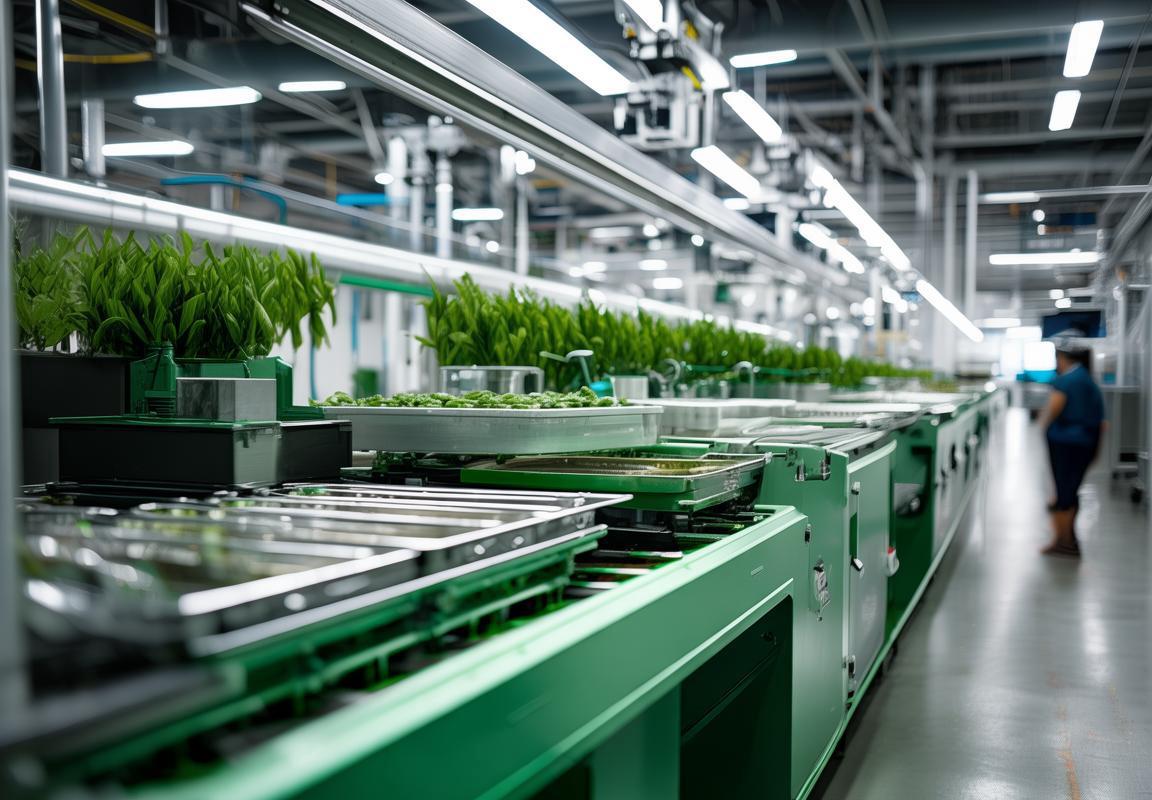
Consumer Reactions
In the world of kitchen appliances, the air fryer has emerged as a game-changer, and with the advent of the automated assembly line, it’s not just the product that’s evolving—it’s the entire market. Consumers are responding in ways that are reshaping the landscape, and here’s how:
The Air Fryer’s Popularity SurgePeople are drawn to the air fryer’s promise of healthier cooking without sacrificing taste. It’s not just about the health benefits; the convenience and the ability to enjoy fried foods with a fraction of the oil is a huge draw. As the market has expanded, so has consumer interest, leading to a surge in demand.
Social Media BuzzSocial media platforms are alive with discussions about air fryers. From influencers sharing their favorite recipes to everyday users posting before-and-after photos of their meals, the air fryer has become a staple in social media circles. This buzz has not only increased brand visibility but has also sparked curiosity among potential buyers.
Cost-Effectiveness and LongevityConsumers are increasingly looking for cost-effective solutions that offer long-term value. The automated assembly line has allowed manufacturers to produce air fryers at a lower cost, making them more accessible to a broader market. Additionally, the precision of automated processes often results in more durable appliances, which consumers appreciate.
Customization and PersonalizationThe rise of the automated assembly line has also opened the door to customization. Consumers can now choose from various sizes, features, and even colors for their air fryers. This level of personalization caters to individual preferences and can make the appliance feel more like a statement piece in the kitchen.
Sustainability and Eco-Friendly PracticesWith growing environmental concerns, consumers are more likely to support brands that prioritize sustainability. The air fryer market is responding by offering energy-efficient models and exploring eco-friendly materials. Consumers who are conscious of their carbon footprint are drawn to these eco-friendly practices.
Brand Loyalty and TrustThe consistency and reliability of products coming off the automated assembly line have bolstered brand loyalty. When consumers know they can count on a product to perform as advertised, they are more likely to remain loyal to the brand. This trust is further solidified by customer service and warranty programs that provide peace of mind.
Health and Wellness TrendsThe air fryer’s ability to cook food with less oil aligns perfectly with the current health and wellness trends. Consumers are looking for ways to eat healthier, and the air fryer offers a solution that doesn’t require sacrificing flavor. This alignment with consumer values has made the air fryer a staple in many homes.
Ease of Use and Learning CurveOne of the most significant consumer reactions is the ease of use. The automated assembly line has led to air fryers that are user-friendly, with intuitive interfaces and simple settings. This has reduced the learning curve for new users, making the air fryer accessible to a wider audience, including those who might not be as tech-savvy.
Feedback and Continuous ImprovementManufacturers are paying close attention to consumer feedback. The automated assembly line allows for rapid prototyping and iteration, enabling companies to quickly adapt to consumer needs and preferences. This responsiveness has created a cycle of continuous improvement that keeps consumers engaged and satisfied.
In conclusion, the impact of the automated air fryer assembly line on the market is profound. It has not only made air fryers more accessible and affordable but has also allowed for innovation in design, functionality, and sustainability. Consumers are responding positively, driving the market forward and shaping the future of kitchen appliances.
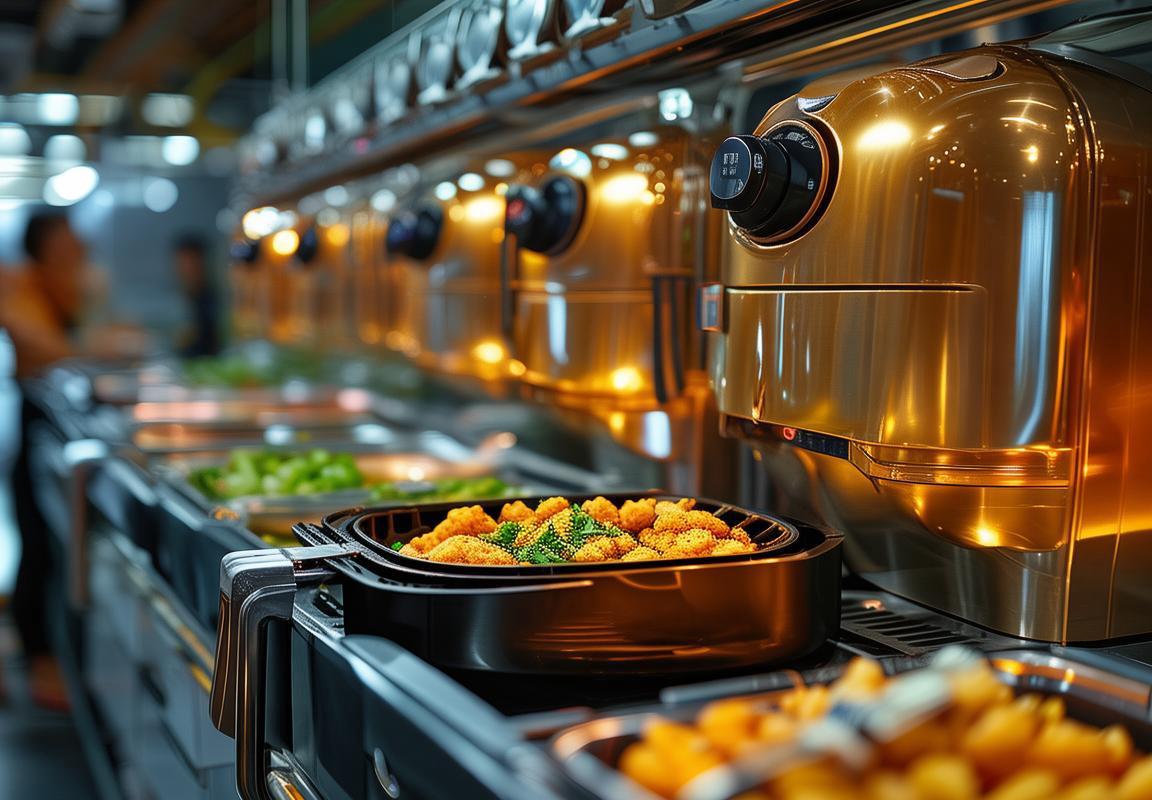
The Future is Here
In a world where technology and convenience meet, the future of kitchen appliances is taking shape, and it’s clear that the future is here. Smart devices are not just a buzzword; they’re becoming integral to our daily lives. Let’s explore how this evolution is reshaping our kitchens and our expectations.
The rise of smart appliances has been gradual, but the pace is quickening. Imagine a fridge that knows when you’re running low on milk or eggs, or a stove that adjusts its heat to the perfect temperature for the dish you’re cooking. These innovations are no longer just ideas; they’re becoming a reality.
Smart ovens, for instance, are now capable of learning your preferences and adjusting their cooking cycles accordingly. They can track your recipes, suggest improvements, and even remind you when it’s time to flip the chicken or add seasoning. The days of guessing the right temperature or leaving the oven door open to check on dinner are slowly becoming a thing of the past.
Microwaves have also stepped up their game. They’re not just for reheating leftovers anymore. Modern microwaves can defrost food to the perfect consistency, cook meals from scratch, and even scan food packages to automatically adjust cooking times and power levels. It’s like having a personal chef at home.
Dishwashers have evolved too, with some models now featuring sensors that can detect soil levels and adjust the cleaning cycle for the best results. They’re quieter, more energy-efficient, and even have features that can sanitize dishes, making them safer for your health.
Refrigerators are no longer just storage units. They’re interactive hubs that can connect to your smartphone, allowing you to monitor their contents from anywhere. You can set reminders for shopping lists, check expiration dates, and even order supplies directly from the fridge. Some models even come with built-in cameras that can help you locate items you’ve misplaced.
But it’s not just about the individual appliances; it’s about how they work together. Imagine a kitchen where all your appliances communicate with each other. Your coffee pot could start brewing in the morning as soon as it senses you’re awake, and your fridge could sync with your calendar to remind you to use up fresh ingredients before they spoil.
The benefits of this interconnected kitchen ecosystem are numerous. For one, it saves time. Who doesn’t want to spend less time cooking and more time enjoying life? It also enhances efficiency, as appliances can optimize their use of energy and resources. And let’s not forget about the environmental impact. Smart kitchens can reduce waste and lower carbon footprints by making better use of energy and water.
Of course, there are challenges to this brave new world. Privacy concerns are at the forefront, with smart appliances potentially collecting a wealth of personal data. Security is also a concern, as any device connected to the internet can be a target for hackers.
Despite these challenges, the future is here, and it’s exciting. The pace of innovation in the kitchen appliance industry is relentless, and it’s bringing with it a level of convenience and efficiency that was once unimaginable. As we continue to embrace these smart devices, we’re not just upgrading our kitchens; we’re upgrading our lives. The future is not just around the corner; it’s already here, and it’s changing everything we thought we knew about cooking and eating.